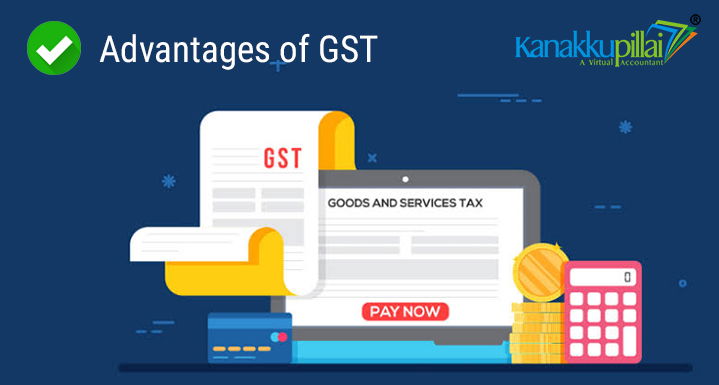The GST or Goods and Service Tax is the replacement of Value added Tax (VAT). It is proposed to be a unified tax that reduces the number of indirect taxes that have been followed before. GST is imposed on all manufacture, sale and consumption of goods as well as services at the national level. It is the replacement of all indirect taxes levied on commodities and services by the State and Central government of India. It is considered that the implementation of GST in the Indian market is a historical tax reformation, as it holds many advantages and some demerits.
Here is the list of all the advantages of GST in India, have a look.
1. Termination of Hidden Taxes
The most important benefit of Goods & Service Tax in India is the termination of hidden taxes, which result in the deduction of the cost of production or cost of doing business. The common people will benefit as the price of products and services will come down, which in turn will help companies increase their production due to demand. The production and distribution of goods and services are progressively used or consumed more and more. An increase in demand will increase the production of goods and services, which in turn boosts the Indian Economy.
2. Reduction of corruption
GST is proposed to reduce the corruption and sales that happen without receipts. Unorganized sector is regulated under GST and it lends ordinance and accountability to unorganized sectors like the textile industry and construction industries.
3. Fund for the Development of Rural India
Replacing multiple state and central taxes, the GST collected is likely to be funded in the development of rural India. The circulation of black money will be controlled as the system followed by shopkeepers and traders is in a mandatory check.
4. Unified Indirect Tax
GST is a unified indirect tax specifically designed to bring all the indirect taxation, such as VAT, SAD, Service tax, CST, CVD, and Excise, under one umbrella. More significantly, GST is going to eradicate the cascading effect of tax.
5. Lowering the Taxes with the Composition scheme
GST provides small businesses with a chance to lower taxes by applying the Composition scheme. This option has brought down the tax and compliance burden of various taxes imposed on small businesses before.
6. Easy Filing and Returns
The complete GST process, from GST registration to filing GST returns, can be done online, and most importantly, it is very simple. This process is highly beneficial for people who are going to start a business as they do not have to run from one office to another to file different registrations like service tax, VAT, and excise.
7. Less number of Compliance
The number of compliances is lower than in the VAT regime. Yes! Under GST, there are only two returns to be filed monthly. There are about 11 returns in GST, 4 are basic returns which is applied by all taxable persons under GST.
8. No More Complications in E-commerce
Earlier in the VAT Regime, supplying goods through the e-business sector was not defined and with a variety of VAT laws. Online websites such as Flipkart and Amazon, which deliver to different states, have to file a VAT declaration and cite the registration number of the delivery truck. In some states like Kerala, West Bengal, and Rajasthan, these online stores were treated as facilitators or mediators, so they did not require any registrations or declarations.
All these confusion and differential treatments in compliance have been taken away in GST regime. Under GST, there are no complications regarding the inter-state movement of goods as it has mapped out the provisions relevant to the e-business sector.
9. Reduction of Logistics Costs
Under GST, the restrictions on inter-state movement of goods have been removed and as an outcome, e-business and warehouse operators have their warehouses at strategic locations, instead of setting their warehouse in every other city on their delivery itinerary. Reduction in unneeded logistics costs will increase the profits for businesses.





